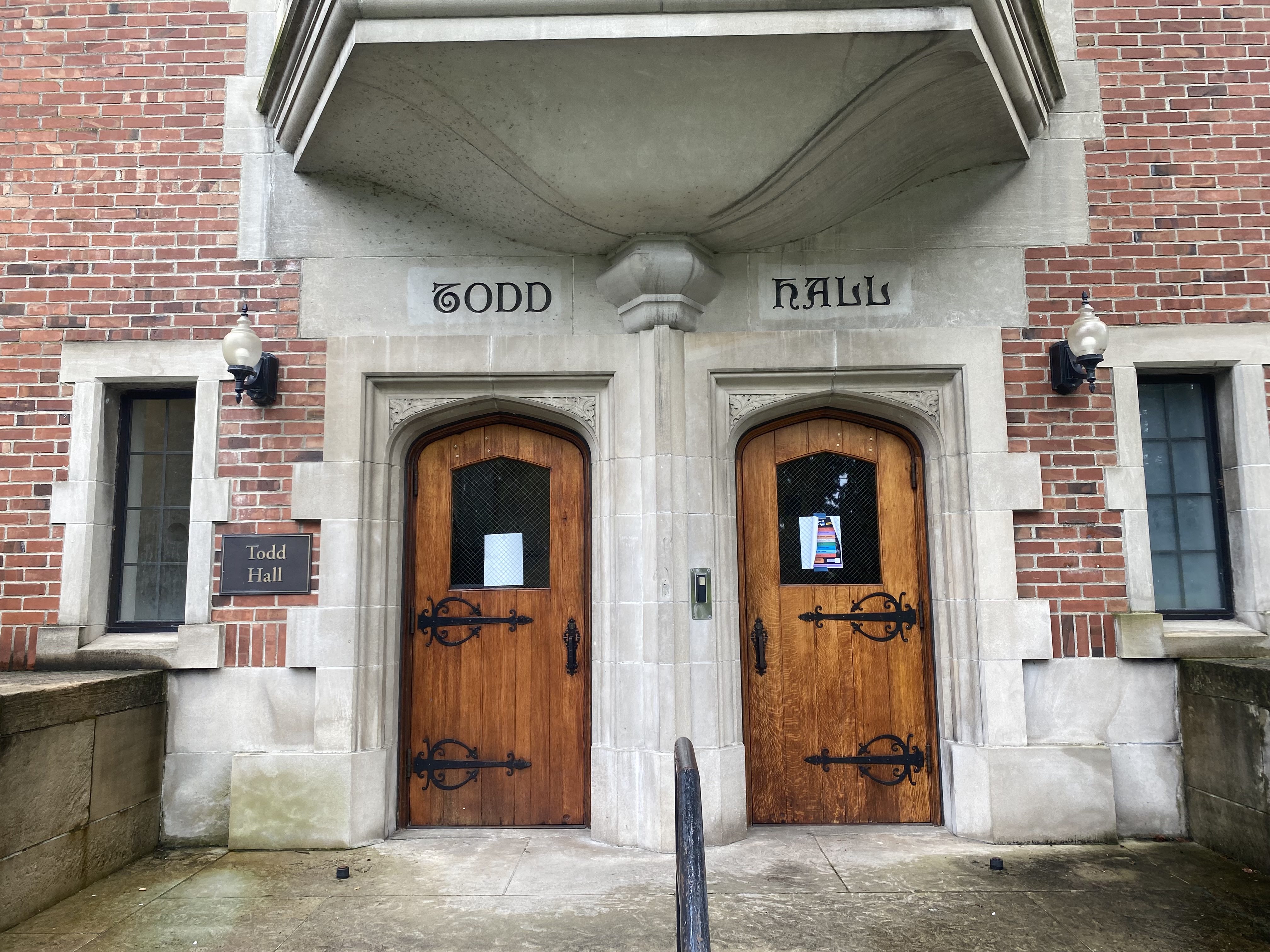
By Jack Leal
Several students have expressed concern about mold in Todd/Phibbs (TP) Hall, and some have reported health issues they believe are related to its presence in their living spaces. Former and current residents, along with University officials and experts, have weighed in, offering perspectives on the risks and preventive measures. Concerns persist despite the fact that University representatives maintain there is no black mold in Todd/Phibbs or anywhere else on campus.
Former TP resident Guy Crawford (‘26) believes the topic doesn’t receive enough attention. He claims to have witnessed mold in TP firsthand. “I’ve seen my friends get sick from it, and I’ve seen it in their rooms. I’ve also seen black mold when taking a shower.”
Robert Zane (‘28), a current first-year student living in TP, is also concerned. “Something that me and my roommate both noticed is throughout the first part of the first semester, when we started living in TP, we both developed this kind of pervasive cough and a sort of brain fog,” he explained. “We went home for winter break for an extended period of time and these symptoms went away. Then when we came back, the symptoms returned. We were like, that might be because of the mold.”
Associate Vice President for Facilities Bob Kief explained it’s important to remember that not all mold is considered hazardous to human health, although his office aims to remove most forms of mold growth from buildings. “Just because we are treating or remediating an area does not mean there was toxic mold there — mold can, for example, stain surfaces — and still not pose a hazard to human health,” he said.
Crawford recalled one particular instance in detail, describing the mold’s appearance. “It was flat, fuzzy and black. But because of how thin the layer was, it was almost translucent, and if you rub it off of something, only some of it will come off, and some of it will still be stuck to the wall,” he said.
Associate Professor of Biology Mark Martin, who holds a PhD in molecular genetics with a focus on the genetics of bacteria and viruses, offered some insight on the topic of black mold. “A lot of people have a negative perception of what they call black mold, and I want to emphasize that it’s a much more complicated issue than it seems,” he said. Martin clarified that not all mold that appears black or has black pigment is necessarily black mold.
He strongly recommends that students refer to information from the Centers for Disease Control and Prevention (CDC). He explained that the CDC website “has for lay people, a really nice description of types of mold. They also talk about the potential health effects and what you should do about it.”
Another recurring concern in TP was the possibility of mold in the ventilation system. Zane described a pipe running through all the rooms on the first floor. “It has this cover on it, but you can see buildup right where it goes into the wall. I can’t see it super well, but I know there’s water flowing through the pipe, so there’s probably some kind of moisture collecting there. That’s something that concerns me.”
Kief was less concerned with mold in the ventilation for a couple of reasons. “We clean our ductwork occasionally, but usually, mold does not grow on the metal or concrete,” he said.
He also noted that many buildings don’t have ventilation systems. “Most people don’t know, especially in the older buildings, that there’s no ventilation in the room, so they’re not getting anything from the ventilation system. The old buildings were designed when ventilation was to open the windows,” Kief said.
In terms of mold prevention, Kief said that students can do their part in preventing the growth of mold in their dorms by “cleaning their individual rooms, particularly condensation and spills, as well as ensuring wet towels and laundry are not left for long periods of time.” Kief also stressed that any problems, such as ongoing moisture or suspected mold of any kind, should be reported right away.
Prof. Martin also pointed out that in the Pacific Northwest, it’s difficult to prevent all mold growth, especially if airflow isn’t maintained in a living space. “The most important thing is, keep humidity down,” he explained. “Fungi like it damp.”
Residence Life Office Assistant Elias Albertson (‘26), noted that submitting mold-related work orders can be challenging. “I think a big part of it is there’s not a way to mention specifically that this is mold. You’d say, ‘this is cleaning’ and then in the notes, you’d say, ‘there is mold’ or ‘there is fungus growing,’” he said.
In response to the number of departments these concerns must go through to get residents’ needs met, Kief urged students to contact him directly. “We just want to make sure the students know that we’re there as soon as we’re contacted. That’s the key! They may go to Res Life or an RA, but we may not see that for a while. I recommend they directly contact us.”
